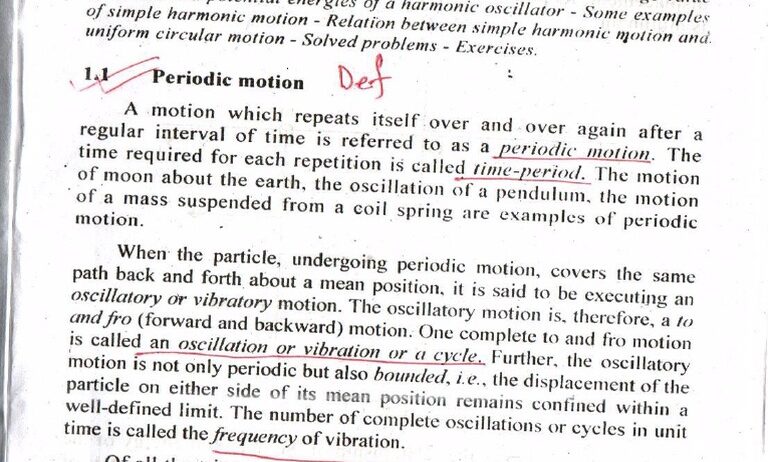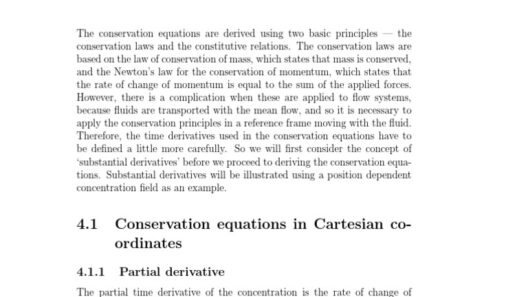Simple harmonic motion (SHM) is a fundamental concept in physics, representing a type of periodic motion where a restoring force proportional to the displacement from an equilibrium position acts on an object. It serves as a cornerstone in various fields, including mechanical engineering, acoustics, and even quantum mechanics. A pivotal question arises within this context: does simple harmonic motion adhere to the principle of conservation of energy? To answer this, we will explore the nature of SHM, the underlying forces involved, and the energy transformations that occur during such motion.
First, it is essential to understand what conservation of energy entails. In a closed system, the total energy remains constant over time. This principle is a fundamental tenet of classical mechanics, with numerous applications throughout the natural sciences. In simple harmonic motion, we examine the interplay between kinetic and potential energy as a mass oscillates around an equilibrium position.
Simple harmonic motion can be exemplified by a mass attached to a spring. The mass can be displaced from its equilibrium position, and the spring exerts a restorative force. According to Hooke’s Law, this force is directly proportional to the displacement of the mass and acts in the opposite direction. As the mass oscillates, two main forms of energy are transformed: kinetic energy (KE) and elastic potential energy (PE).
At the point of maximum displacement, the mass momentarily comes to rest, and all the energy in the system is potential energy. This maximum elongation or compression of the spring corresponds to the peak of the potential energy curve. Conversely, as the mass moves towards the equilibrium position, it accelerates, and kinetic energy increases while potential energy decreases correspondingly. At the equilibrium position, the mass possesses maximum kinetic energy and zero potential energy. Throughout the cycle, energy oscillates between these two forms, demonstrating that energy is conserved within the system.
The mathematical representation of these energy transformations further elucidates the relationship between kinetic and potential energy. In SHM, the potential energy stored in the spring is given by the formula:
PE = (1/2)kx²
where k is the spring constant and x is the displacement from the equilibrium position. The kinetic energy, on the other hand, is defined as:
KE = (1/2)mv²
where m is the mass and v is the velocity. At any point during the oscillation, the total mechanical energy (E) of the system can be expressed as:
E = KE + PE
This equation reinforces the conservation of energy principle, as E remains constant throughout the motion, assuming no external forces (like friction or air resistance) act on the system.
Next, we consider energy loss mechanisms that may complicate this ideal scenario. In practical applications, systems are seldom perfectly isolated. Factors such as friction, air resistance, and material damping can convert mechanical energy into thermal energy, subsequently dissipating energy from the system. In such cases, although SHM may not strictly adhere to conservation of energy, the concept still holds true if accounting for energy lost through non-conservative forces.
In more complex scenarios involving damping, energy still undergoes conversion, albeit at the expense of total mechanical energy. The motion becomes progressively attenuated, with the amplitude of oscillation diminishing over time. Despite this energy dissipation, the conservation principle applies to the total energy, acknowledging that some portions are transmuted into forms outside the mechanical domain.
In addition to damped harmonic oscillators, we can extend our examination of energy conservation in SHM to driven systems, particularly interesting in resonance phenomena. When an external force is periodically applied to a system, energy is continually supplied, leading to the maintenance or enhancement of oscillations. This can be visualized as a piano tuning fork being struck, resonating with an applied frequency. Here, the total energy of the system increases as energy is added externally, and previously discussed principles about energy conservation shift slightly to accommodate non-conservative work.
Furthermore, understanding SHM extends universally to a myriad of systems beyond springs, including pendulums, circuits in electronics, and oscillating molecules in chemistry. Each showcases how energy alterations adhere to fundamental laws while also embracing complexity in real-world applications. The study of simple harmonic motion thus offers profound insight into oscillatory behavior across different domains, advocating for a comprehensive understanding of conservation principles.
In summary, simple harmonic motion unequivocally follows the principles of energy conservation, underscoring the cyclic interchange between kinetic and potential energy. Although in real-world applications, energy loss through non-conservative forces comes into play, the overarching principle remains intact – total energy in a closed system is conserved. By delving into various aspects of simple harmonic motion, we uncover how fundamental physics principles permeate our understanding of not only mechanical systems but also broader phenomena in nature. Thus, the exploration of SHM not only enhances our grasp of classical mechanics but also establishes essential connections with the natural world, emphasizing the importance of energy conservation principles, regardless of the complexity inherent within systems.






